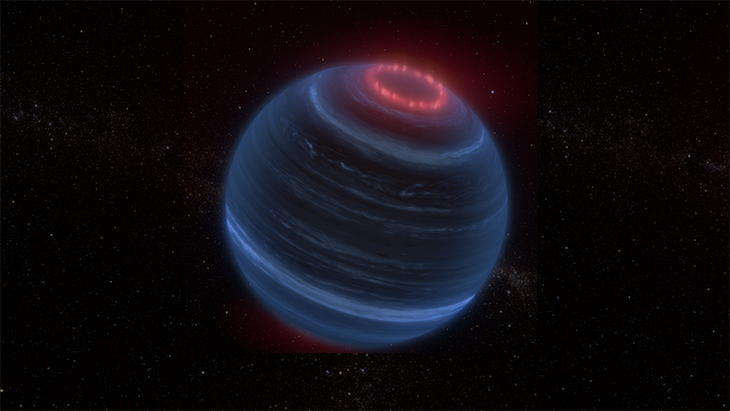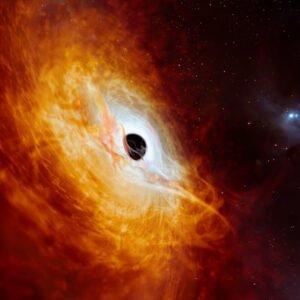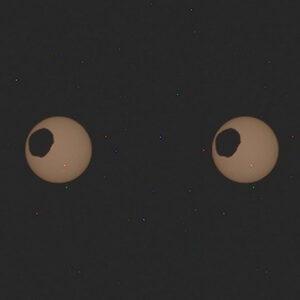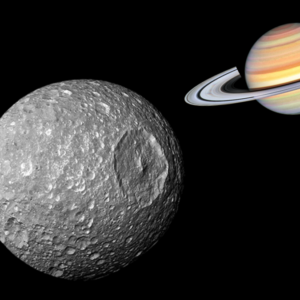
It’s widely understood that the mesmerizing spectacle of the Aurora Borealis, or Northern Lights, arises from the interplay of solar-charged particles with Earth’s magnetic field. But here’s a fascinating twist: what if the Sun, the usual suspect in this celestial dance, were absent? Could we still witness this luminous phenomenon?
Recent observations by astronomers utilizing NASA’s groundbreaking James Webb Space Telescope hint at precisely that possibility. They’ve stumbled upon an object in the vast expanse of space exhibiting characteristics akin to an aurora, reminiscent of our terrestrial Northern Lights.
The enigmatic subject of their study is a brown dwarf, christened W1935, a celestial body larger than Jupiter yet falling short of stellar proportions. Unlike the planets within our solar system, which owe their auroras to interactions with nearby stars, this brown dwarf stands alone in the cosmos, devoid of a stellar companion to trigger such luminous displays.
In essence, this discovery challenges our conventional understanding of auroras, suggesting that these breathtaking light shows may not be exclusive to worlds basking in the radiance of a nearby star. Instead, they might manifest in the eerie solitude of space, a testament to the intricate interplay of cosmic forces that continue to captivate and intrigue humanity’s exploration of the cosmos.
“This is an unexpected discovery because the brown dwarf is cold and lacks a host star; therefore, there is no obvious source of energy to heat its upper atmosphere and make the methane glow,” NASA writes.
This week, the 243rd meeting of the American Astronomical Society in New Orleans hosts the presentation of the findings.
In their quest to unravel the mystery surrounding methane’s infrared emission, the team looked to our own solar system for answers.
“Methane in emission is a common feature in gas giants like Jupiter and Saturn. The upper-atmosphere heating that powers this emission is linked to aurorae.”
On Earth, the mesmerizing spectacle of the Northern Lights is born from a ballet of energetic particles hurtling along magnetic field lines toward the planet’s poles. As they collide with atmospheric gases, they weave enchanting curtains of light, painting the night sky with an otherworldly glow.
Similarly, Jupiter and Saturn boast their own celestial light shows, fueled not only by interactions with the solar wind but also by the influence of their bustling moons—such as Io for Jupiter and Enceladus for Saturn—adding to the grandeur of their auroras.
Yet, in the case of isolated brown dwarfs like W1935, NASA finds itself puzzled. Unlike their stellar counterparts, these dwarfs lack the companionship of a stellar wind to fuel their auroral displays. The mystery deepens as these distant orbs emit methane-laden energy into their upper atmospheres without a clear explanation.
Seeking to unravel this cosmic enigma, a team led by astronomer Jackie Faherty of the American Museum of Natural History has embarked on a daring mission. Armed with the powerful Webb telescope, they set their sights on a dozen cold brown dwarfs, including W1935—a celestial gem unearthed by the keen eye of citizen scientist Dan Caselden.
Through meticulous observation and analysis, Faherty’s team proposes two intriguing possibilities. Perhaps, concealed within the depths of these dwarf atmospheres, lie internal mechanisms akin to the atmospheric phenomena observed on Jupiter and Saturn. Alternatively, external factors, such as interactions with interstellar plasma or the gravitational pull of nearby active moons, may hold the key to unlocking the secrets of their ethereal emissions.
“With W1935, we now have a spectacular extension of a solar system phenomenon without any stellar irradiation to help in the explanation.” Faherty noted. “With Webb, we can really ‘open the hood’ on the chemistry and unpack how similar or different the auroral process may be beyond our solar system.”
What are your thoughts? Please comment below and share this news!
True Activist / Report a typo


